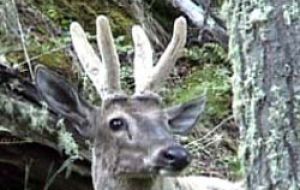MercoPress. South Atlantic News Agency
Biosphere reserve in Chilean Patagonia gives hope for preservation of the huemul
 The huemul is an emblematic Patagonian deer and endangered species
The huemul is an emblematic Patagonian deer and endangered species The United Nations added 18 new sites to its global list of biosphere reserves, (including one in Chilean Patagonia) bringing the total to 581 in 114 different countries, the UN Educational, Scientific and Cultural Organization (UNESCO) reported.
The International Coordinating Council of UNESCO’s Man and the Biosphere Programme (MAB), meeting in Dresden, added sites in Lithuania, Maldives, Saint Kitts and Nevis, and Togo for the first time to the World Network of Biosphere Reserves (WNBR).
Biosphere reserves are places recognized by MAB where local communities are actively involved in governance and management, research, education, training and monitoring at the service of both socio-economic development and biodiversity conservation. They are thus sites for experimenting with and learning about sustainable development, UNESCO said.
Including Chile’s Corredor Biologico de Nevados de Chillan y la Lagua del Laja in the WNBR gives a boost to private and government efforts for the conservation of the huemul, a Patagonia native deer.
The huemul herd in the Corredor Bilogico is down to 40 and highly fragmented as to their distribution which makes reproduction difficult. Besides they are geographically isolated from a greater herd further south in the Aysen region.
Chile’s National Committee for the defence of fauna and flora, CODEFF, received with great enthusiasm the UNESCO news.
“This acknowledgement has been possible because of the joint work of civil society organizations with officials from municipal, regional and central government offices”, said Bernardo Zentilli, president of CODEFF.
“The WNBR is protected by international law which is a great step forward for the conservation of the huemul, an emblematic Chilean species, which is in serious danger of extinction with only 2.500 left according to the latest census”, said Zentilli.
A biologic corridor is described as a geographic space which provides connectivity for ecosystems, habitats, original or modified and which at the same time ensures the maintenance of biological diversity, plus protection to ecologic and evolution processes.
Nevados de Chillán is an Andes cordilleran protected area with the purpose of making compatible its sustainable use with conservation of hydrologic basins, flora and fauna resources, preservation of scenic beauties, avoid the destruction of soils and protect the fields where the huemul lives.




Top Comments
Disclaimer & comment rules-

-

-

Read all commentsThe huemul is an emblematic native species from Chile......but the Nevados de Chillan and the Laguna del Laja are far away from the Chilean Patagonia....which start from the Region de Aysen to tthe South, where the Cordillera de los Andes die. Just to get clear the only two Regions of Chile that the Chilean Patagonia belong to.
Jul 03rd, 2011 - 03:42 pm 0Actually, the most of the huemul population have been watched in isolated areas of the Region de Magallanes, where is almost impossible to be reached by the human being, even in the past they lived along the Cordillera de los Andes from the Central Zone to the South.....but they were hunted and their enviroment changed so they were alsmost desappeared. Fortunately, there are some isolated area were they can live for a long time.....
Hi Sergio, I generally agree with you, though you must consider, Chilean Patagonia has the narrow (more spread) definition you mentioned (Aysen + Magallanes), but in some cases a wider interpretaion of Patagonia is also mentioned, incl. region de los Lagos up to Valdivia.This is probably to have it syncron the the argentinian Patagonia, which starts arround @ same cordenates.
Jul 04th, 2011 - 12:52 pm 0Yes, the inhabitants of those Chilean regions have treated to get the benefits of this O. D. “Patagonia” for their tourism industry, but in our side of the Andes the are not plain areas with mainly “coiron” as green like the other side (Argentine), the main character of the Patagonian soil. And other very important mark is that where the Andes die the west Patagonia start....and that can't be changed....So, Chilean Patagonia is just Aysen and Magallanes.....
Jul 05th, 2011 - 02:46 am 0Commenting for this story is now closed.
If you have a Facebook account, become a fan and comment on our Facebook Page!